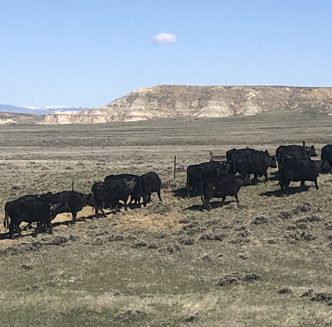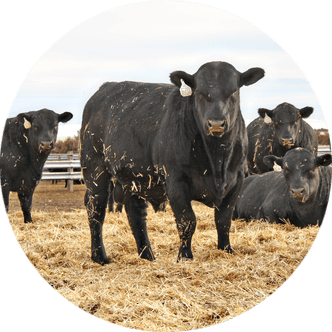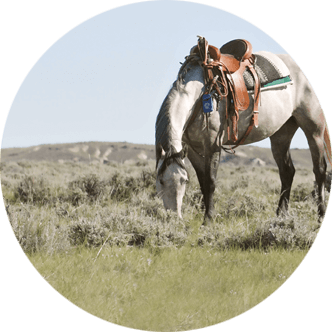House advances President Trump’s “One Big Beautiful Bill”
On May 22, following intense negotiations and some last-minute amendments, the U.S. House of Representatives narrowly passed President Donald J. Trumps “One Big Beautiful Bill” in a 215-to-214 vote.
This comes after the bill stalled on May 16 when five House Republicans voted against it. Then, two days later, the House Budget Committee advanced the bill with four members voting “present,” yielding a 17-to-16-to-four vote.
According to multiple sources, the One Big Beautiful Bill is a comprehensive legislative proposal created to extend and expand 2017 tax cuts, increase defense and border security spending and implement significant changes to multiple federal programs and educational policies.
Now, the bill will advance to the Senate where it is expected to undergo further debate and revisions. Republican leaders are then hoping to pass the bill via budget reconciliation by July 4 to avoid a filibuster and raise the debt limit by August.
“This is a big day,” said U.S. Speaker of the House Mike Johnson during a press conference held on May 22 after the vote. “We said it on the House floor, – it’s finally morning in America again.”
“Today, the House has passed a generational, truly nation-shaping legislation to reduce spending and permanently lower taxes for families and job creators, secure the border and unleash American energy dominance, restore peace through strength and make government work more efficiently and effectively for all Americans,” he added.
In a celebratory post on Truth Social, Trump wrote, “This is arguably the most significant piece of legislation that will ever be signed in the history of our country. Great job to Johnson and House leadership, and thank you to every Republican who voted ‘yes’ on this historic bill.”
Bill provisions
According to a May 20 ABC News article, some highlights of the bill include making tax cuts from the 2017 Tax Cuts and Jobs Act permanent and introducing new tax breaks, including eliminating taxes on tips and increasing the child tax credit to $2,500.
The bill also proposes a higher cap on state and local tax, which would allegedly benefit residents of high-tax states.
In regards to education reform, sources note the bill would increase eligibility requirements for Pell Grants, introduce Workforce Pell Grants for trade school students, halt Federal Direct subsidized loans for undergraduates and eliminate the Department of Education’s ability to regulate based on gainful employment.
ABC News points out the bill makes big changes to Medicaid as well, imposing new work requirements for 19- to 64-year-old able-bodied recipients who don’t have dependents.
It would also require states to conduct eligibility redeterminations at least every six months for all Medicaid recipients and remove undocumented migrants from eligibility, as well as increase copays for recipients who make more than the federal poverty limit and increase required paperwork for income and residency verification.
“Under the bill’s current text, these work requirements don’t kick in until 2029, when Trump leaves office. But, House Republican hardliners are looking at moving the date up to 2026-27 in their negotiations with leadership,” ABC News says.
Another big provision in the bill pertains to the Supplemental Nutrition Assistance Program (SNAP). According to ABC News, the bill would tighten eligibility requirements, demanding those aged 55 to 64 and all children to face additional work requirements to qualify for SNAP benefits.
Currently 100 percent federally funded, the bill would also require states to share in at least five percent of SNAP benefit costs beginning in 2028.
“Changes could have indirect impacts on school lunch programs, require some previously eligible families to apply for access and impact federal reimbursement payments for some school districts,” ABC News reports.
An additional highlight of Trump’s One Big Beautiful Bill is $50 billion to revive construction along the U.S. and Mexico border and to make sweeping changes to immigration policy.
ABC News notes the bill includes $4 billion to hire 3,000 additional Border Patrol agents and 5,000 customs officers, as well as $2.1 billion for signing and retention bonuses and funds for 100,000 more Immigration and Customs Enforcement officers and investigators.
Ag impacts
According to DTN Ag Policy Editor Chris Clayton, for agriculture producers specifically, the bill would improve the safety net outlined in the 2018 Farm Bill, offer better reference prices and broader protection under commodity and insurance programs and increase the payment limit for farm programs.
Specifically, Clayton reports the bill would increase reference prices for the Price Loss Coverage (PLC) program in line with the farm bill package passed out of the committee last year, which includes $4.10 per bushel for corn, $10 per bushel for soybeans, $6.35 per bushel for wheat, 42 cents per pound for cottonseed, $16.90 per hundredweight for rice and $4.40 per bushel for grain sorghum.
For Agricultural Risk Coverage (ARC), the ARC guarantee would increase from 86 to 90 percent of benchmark revenue and the maximum payment rate for the ARC County Program and ARC Individual Program would increase from 10 percent to 12.5 percent of benchmark revenue.
The bill would also raise loan rates for non-recourse marketing loans to producers. For corn, the new loan rate would be $2.42 per bushel, $6.82 per bushel for soybeans, 55 cents per pound for upland cotton and $3.72 per bushel for wheat.
“Producers would also see payment limits increase under the bill from $125,000 per individual or entity to $155,000, starting with the current 2025 crop year,” Clayton notes. “The adjusted gross income limit for producers would remain at $900,000 – except for individuals or legal entities which demonstrate at least 75 percent of their income is derived from farming, ranching or silviculture.”
“For base acres, the bill creates a mechanism to add 30 million base acres, reflecting large tracts of farmland have gone into production, but those acres have been excluded from commodity programs,” he continues. “Eligibility to enroll those acres will be limited based on planted acres and an allocation formula the U.S. Department of Agriculture will use to spread out enrollment.”
For the dairy industry, Clayton says the bill would improve Dairy Margin Coverage protection from five million pounds to six million pounds.
While several industry groups have praised the bill for addressing much needed reform and funding priorities, they have also voiced concern.
Both the National Corn Growers Association (NCGA) and National Cattlemen’s Beef Association (NCBA) admitted the bill addresses several of their priorities.
“Cattle farmers and ranchers need Congress to invest in cattle health, strengthen our resources against foreign animal disease, support producers recovering from disasters or depredation and pass tax relief to protect family farms and ranches for future generations,” says NCBA President and Nebraska Cattleman Buck Wehrbein in a May 22 press release. “Thankfully, this reconciliation bill includes all of these key priorities. NCBA was proud to help pass this bill in the House, and we will continue pushing for these key policies until the bill is signed into law.”
NCGA, however, also voiced concern about the imbalance of investment across various commodities and the potential impact of changes made to the PLC program.
Likewise, National Farmers Union President Rob Larew says he appreciates plans to improve the safety net and maintain conservation programs, but criticized the process that led to cutting SNAP.
“Pitting farm and nutrition priorities against one another creates unnecessary division and weakens the broader effort,” Larew says. “A strong farm bill, however it comes together, must reflect the full scope of challenges facing agriculture and rural communities, and it must work for everyone it touches – farmers, ranchers and families across the country.”
Hannah Bugas is the managing editor of the Wyoming Livestock Roundup. Send comments on this article to roundup@wylr.net.





